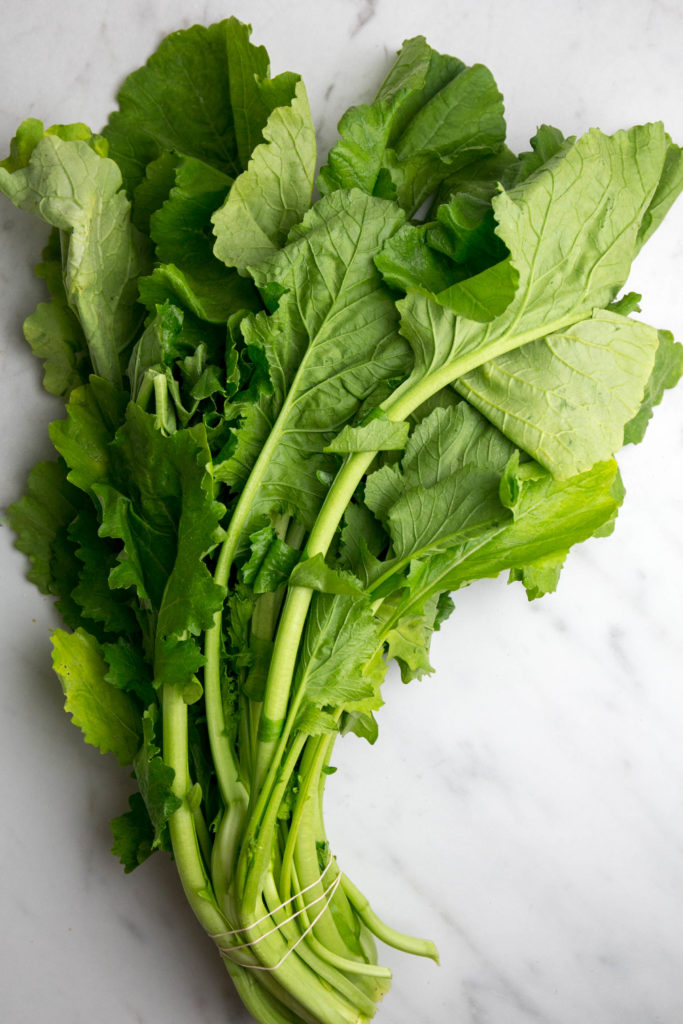Rapini, also known as broccoli rabe or broccoli raab, is a leafy green vegetable that belongs to the Brassica family, which includes cabbage, broccoli, and Brussels sprouts. Despite its somewhat intimidating appearance with its bitter taste and slightly coarse texture, rapini is celebrated for its nutritional richness and versatility in the culinary world. In this comprehensive guide, we’ll delve into the origins of rapini, its health benefits, culinary uses, and provide some delicious recipes to help you incorporate this powerhouse vegetable into your diet.
Health Benefits of Rapini
Nutritional Profile
Rich in vitamins and minerals: Rapini is packed with essential nutrients such as vitamins A, C, K, and folate, as well as minerals like calcium, potassium, and iron.
High in fiber: The high fiber content of rapini aids in digestion, promotes gut health, and helps regulate blood sugar levels.
Low in calories: Despite its nutrient density, rapini is low in calories, making it an excellent choice for those watching their calorie intake.
Antioxidant Properties
Rapini contains powerful antioxidants such as beta-carotene and lutein, which help protect cells from damage caused by free radicals and reduce the risk of chronic diseases like cancer and heart disease.
Anti-inflammatory Effects
The phytochemicals found in rapini, such as sulforaphane and indole-3-carbinol, possess anti-inflammatory properties that may help reduce inflammation in the body and alleviate symptoms of conditions like arthritis and asthma.
Bone Health
With its significant levels of calcium, vitamin K, and magnesium, rapini supports bone health and helps prevent conditions like osteoporosis.
Heart Health
The combination of fiber, potassium, and antioxidants in rapini contributes to heart health by lowering cholesterol levels, regulating blood pressure, and reducing the risk of cardiovascular disease.
Culinary Uses of Rapini
Cooking Methods
Blanching: Briefly boiling rapini before sautéing or incorporating it into other dishes helps reduce its bitterness and soften its texture.
Sautéing: Rapini can be sautéed with garlic, olive oil, and chili flakes for a simple and flavorful side dish.
Roasting: Roasting rapin’i in the oven with olive oil, salt, and pepper enhances its natural sweetness and adds a caramelized flavor.
Steaming: Steaming rapini preserves its nutrients while maintaining its vibrant green color and crisp texture.
Pairing with Other Ingredients
Pasta: Rapin’i pairs well with pasta dishes such as orecchiette with rapin’i and sausage, adding a nutritious and flavorful element to the meal.
Eggs: Sautéed rapin’i makes a delicious addition to omelets, frittatas, and scrambled eggs, providing a boost of vitamins and minerals.
Grains: Incorporating rapin’i into grain-based dishes like risotto or quinoa salad adds both texture and nutritional value.
Incorporating into Soups and Stews
Adding rapin’i to soups and stews not only enhances their flavor and nutritional content but also contributes to their visual appeal with its vibrant green color.
Delicious Rapini Recipes
Sautéed Rapini with Garlic and Lemon
Ingredients: Rapin’i, garlic, lemon zest, olive oil, salt, pepper.
Instructions: Sauté garlic in olive oil until fragrant, add blanched rapin’i, and cook until tender. Finish with lemon zest, salt, and pepper.
Rapini and White Bean Pasta
Ingredients: Rapin’i, pasta, white beans, garlic, red pepper flakes, Parmesan cheese, olive oil.
Instructions: Sauté garlic and red pepper flakes in olive oil, add cooked rapin’i and white beans, toss with cooked pasta, and top with Parmesan cheese.
Roasted Rapini with Balsamic Glaze
Ingredients: Rapin’i, balsamic vinegar, olive oil, salt, pepper.
Instructions: Toss rapin’i with olive oil, salt, and pepper, roast in the oven until tender and slightly charred, drizzle with balsamic glaze before serving.
Conclusion
Rapin’i is a nutritional powerhouse that offers a wide range of health benefits and culinary possibilities. Whether sautéed, roasted, or added to soups and stews, rapin’i adds depth of flavor, vibrant color, and essential nutrients to any dish. By incorporating rapin’i into your diet regularly, you can boost your overall health and enjoy delicious meals that nourish both body and soul. So, next time you’re at the market, be sure to pick up some rapin’i and experiment with this versatile vegetable in your kitchen.







